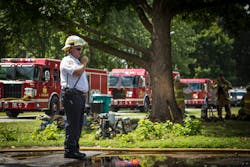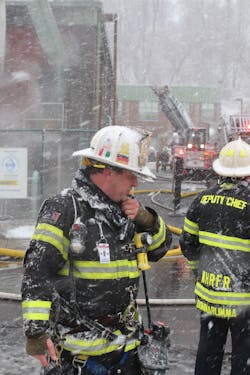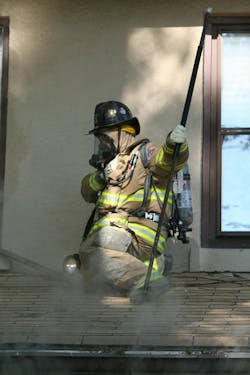Building & Sustaining Effective Fireground Communications
Fire service history and fatality reports have consistently verified that substandard fireground radio communications, such as the lack of model policies, deficient training, poor verbalization and listening skills, and poorly designed equipment, are leading contributing factors to firefighter injuries and fatalities, ineffective suppression operations, and weak incident management. To prevent these dangerous communication and operational related failures, all personnel—from the newest probationary firefighter up to and including department administrators—must support and encourage the use of efficient standardized and disciplined radio communications on the fireground.
To assist in gaining an understanding of this important skill, this article will focus on how firefighters, ICs and department executives can apply best practice communication models, standard operating guidelines (SOGs), training, and field-proven portable and mobile radio use procedures to promote exceptional strategic and tactical fireground communications that support an organized and coordinated fire suppression operation.
Infrastructure
Based on our experience and a number of well-confirmed system failures that have occurred across the fire service, we unequivocally believe that the foundation for ensuring effective incident communication begins with the technical design and construction of an NFPA 1221: Installation, Maintenance, and Use of Emergency Services Communication Systems-compliant infrastructure that is capable of supporting the needs of your department. This responsibility rests squarely on the shoulders of department executives who should consider this a fundamental first step in developing fireground communication capabilities that can support the life safety of their personnel operating in dynamic and stressful fireground environments.
Standard operating guidelines
The implementation and use of SOGs directing how firefighters, ICs and dispatch centers communicate at emergency incidents is a mandatory and highly effective component of securing safe, high-quality fire department communication capabilities. For this to occur, fire department leaders need to implement definitive communication policies and procedures for their personnel working in environments where accurate radio transmissions and the expedient exchange of information is critical to their safety and operational success.
When developing these procedures, personnel from all levels of the command structure, boots on the ground firefighters, and your local communication center should be involved to ensure inclusion and acceptance of the finished product by all staff members. While these guidelines should be written to manage the communication needs of your specific department, it is best to also include your regional mutual-aid partners who will be operating at emergency incidents with your personnel and within your community. In this instance, bigger is better.
To meet nationally recognized NFPA standards as they relate to incident communications, department policies and procedures should follow specific criteria. For example, NFPA 1500: Standard on Fire Department Occupational, Safety, Health, and Wellness Program states that, “The fire department shall establish and ensure the maintenance of a fire dispatch and incident communication system that meets the requirements of NFPA 1561 and NFPA 1221.” It also states that all personnel operating in a hot or warm zone shall be equipped with a portable radio, fire department procedures shall provide direction in the use of clear text radio messages, and “emergency traffic” shall be used as a designator to clear radio traffic for an emergency affecting the incident. Additionally, it covers the mandatory use of the term “mayday” to signify that a firefighter needs immediate assistance and the use of an incident “time clock” by a communication center to identify the time on scene.
Further, NFPA 1561: Standard on Emergency Services Incident Management System and Command Safety identifies the need for the procedures to include standard protocols and terminology, clear text, plain language and a standard method to give priority to emergency messages, such as urgent and mayday messages. NFPA 1561 includes clear direction concerning the need for radio communication systems to have the capacity to provide a dispatch and tactical radio channel for initial use, and the capability to provide additional command and tactical channels for large incidents requiring multiple resources and agencies. In our experience, we have found that the most skilled ICs use the decentralization and assignment of fireground radio channels as identified in the standard as a supportive strategy to ensure that they maintain the ability to efficiently communicate on, monitor and control all the radio channels being utilized at an incident.
In addition to the above mandates, NFPA 1710 and 1720, which regulate the organization and deployment of fire suppression operations by career and volunteer fire departments, also include sections on communication systems.
Verbal interaction
All fireground communication should incorporate the following three-part strategy of effective verbal interaction:
- Simple language: Crews should use common words, gestures, catchphrases and communication models to deliver accurate information that both the sender and receiver understand and acknowledge. This translates to following the standard of using plain language, clear text, plain English, and key words to converse.
- Number of words: Crews should use a logical and organized thought process to develop their message prior to keying the radio mic. In other words, all personnel should follow the “think before you push” philosophy and send only the information that is vital to the situation. This should reduce the potential for an individual to tie up the radio channel with disorganized and unnecessary transmissions.
- Message received: The message sender must confirm that the transmitted message is understood by the receiver, ultimately bonding the sender and receiver together as one synchronized and informed entity. This action places the involved personnel on the same page as it relates to ensuring all fireground operations are coordinated successfully and follow the chosen strategy and tactics.
Communication models
A simple, easy-to-use model that’s employed nationally within many departments is the Communications Order Model, a best practice method for ensuring that fireground communications are transmitted and received in a format that assures an organized, clear and coordinated transfer of information. Here’s an example of this five-step process:
· Step 1: “Squad 241 from Command.”
· Step 2: “Command from Squad 241, go ahead with your message.”
· Step 3: “Squad 241, stretch a 1¾ line to Division 1, Side A, for fire attack.”
· Step 4: “Squad 241 received, stretch a 1¾ line to Division 1, Side A, for fire attack.”
· Step 5: “Command received the message.”
The five steps ensure that each dialogue between a sender and receiver is confirmed and understood by both parties.
Regardless of the model your department adopts, the most critical point is that all personnel recognize that any fireground communication needs to have a sender who transmits the message and a receiver who will confirm receipt and provide the required feedback. This is commonly identified as a “communication loop” in which all those involved in the transmitted message, including the local dispatch center, fully understand and acknowledge the exchange of information.
Emergency communications
As stated in several NFPA standards, it is mandatory for every fire department to have established SOGs covering the use of emergency communications. When implemented and used accurately, these guidelines provide crews on scene and dispatch personnel the ability to gain control of a radio channel to verbalize critical fireground information and transmit crisis events involving firefighters who may be distressed, trapped or disoriented during interior fire suppression operations.
To ensure that this occurs, the following terms and messages should be a component of the written guidelines, practiced and applied as necessary.
· The first step in this priority-based notification process is employing the term Emergency or Priority Traffic to gain control of a radio channel to transfer crucial fireground information and to alert operating members to limit and/or discontinue communications on that channel. Once this is transmitted and acknowledged, the requesting member can then communicate this non-life-threatening, but important, information to command or other individuals or companies.
· If the message to be delivered involves a situation or imminent hazard that could cause injury to a member or disrupt the ongoing fire suppression operation, the term Urgent should be used. Some common uses of the Urgent message include potential collapse, loss of water supply, apparatus or equipment malfunctions, and changes in fire or smoke conditions.
· The final and most serious emergency term used on the fireground is the Mayday message. This message is used to signify that a member or members require immediate assistance to an impending life-threatening situation. It can be declared by any member at the incident who becomes aware of an acute and dangerous situation involving a distressed firefighter and many times will be announced independently of any other emergency message and void of any attempt to gain control of a radio channel. Firefighters and ICs need to be prepared to react in an effective, controlled and coordinated manner immediately after the mayday message is transmitted in order to secure the safe and rapid removal of the member in distress. Since these messages do not occur often, the key to a successful outcome lies with consistent training and strict use of department guidelines.
Radio use
While it is understood that face-to-face communications, wherein the involved parties have the opportunity to view facial expressions and make eye contact, remains the best way to transfer information on the fireground, it is important to recognize that most of our interactions will not be in this form. To address this challenge and ensure effective communications, there are several best practices honed from a number of communication-based studies and fireground experiences that, if applied, will support the effective transfer of information at emergency incidents.
The U.S. Fire Administration’s (USFA) Voice Radio Communications Guide for the Fire Service and several other published studies, including the detailed report titled “Portable Radio Placement in the IDLH,” completed by the Fairfax County, VA, Fire Department in 2013, identifies several critical factors regarding the use of portable radios in IDLH environments. One of the most hotly debated and controversial issues is where a firefighter should carry their portable radio. There are many opinions on the pros and cons of whether the exterior radio pocket or the carrying case/strap/under the coat arrangement is the most reliable and transmission-friendly location.
While we have used the case/strap method throughout our careers and support this location, there are two critical factors that firefighters need to take away from these studies when deciding on where to locate their portable radio. The first is that in order secure maximum signal strength to transmit and receive messages, the antenna should be exposed and located in an upright or vertical position. The second point is that firefighters should take every action to ensure that their portable radio and associated accessories, such as the radio speaker mic (RSM), is protected from potential fall, steam, heat and water damage, and is immediately accessible in an emergency. Firefighters should look to employ the most reliable carrying location for their portable radios in order to reduce the potential for radio failure during fire suppression operations.
NFPA 1500 mandates that “all personnel operating in a warm or hot zone shall be equipped with a portable radio provided by the fire department.” While many individuals may not agree with this mandate, our experience has indicated that most fire departments across the country operate with limited response and staffing resources daily. This places firefighters in a number of dangerous situations where they are single-handedly conducting multiple functions during fire suppression operations with their only partner being the portable radio they are carrying. This reality underscores why portable radios should be thought of as a life-saving extension of one’s PPE and, as such, accessible to each member operating on the fireground.
While we support the opinion that every firefighter operating at an emergency incident should be provided a radio, it is important for firefighters to understand and practice radio discipline at all incidents. Applying effective radio discipline is a process of enhancing firefighter safety, reducing radio traffic, supporting coordinated operations, and maintaining clear radio channels. Members can support this concept by limiting transmissions to essential incident information only, limiting message length, waiting for their turn to speak, and establishing what they want to say before they push the button.
To improve the performance of communicating in high-stress, fast-paced environments, personnel can enlist a number of field-proven techniques:
· Speak slowly, in moderate volumes, with good articulation, and with a controlled voice into the RSM.
· Do not whisper.
· Avoid screaming into the radio, which can increase the stress level of other members and lead to garbled and inaudible transmissions as well as an inefficient and unsafe fire suppression operation.
· To limit or avoid feedback when operating in close proximity to other firefighters a member can cover their RSM, lower the radio volume, or turn away when transmitting.
Another common technique that firefighters use is holding the RSM against their neck when speaking. Improved communication using this method is possible but depends on the situation and the manner and location in which the member holds the RSM. When utilizing an SCBA mask voice port or amplifier to communicate, firefighters should hold the RSM in front of the device and speak in the manner identified above. If not utilized correctly, these appliances can impair a member’s ability to deliver clear and concise information. Training on the proper use and function of these devices should be a common occurrence in your organization.
An important element of daily communication skills that members need to develop and apply is the art of effective listening. Gaining situational awareness of your own environment and that of the overall emergency incident through listening to and evaluating radio transmissions is key to diagnosing potential problems, determining the status of the suppression operation, and improving the safety of operating personnel. Becoming an efficient listener on the fireground and using that skill to improve your personal situational awareness is a difficult, yet essential, talent to master.
Training
The era of handing a firefighter a radio on the first day of work and expecting them to become proficient in its use has past us by long ago. The systems and technology built into today’s modern radios are more complex and challenging than in years past. As such, proper and repetitive training of fire and dispatch personnel in the efficient use of fireground communication procedures is the key to ensuring accurate and effective radio communications. The various elements of the training required to reach a high level of skill and understanding in this area is lengthy and varied.
Step by step
· Guideline review: Standardized department training should begin with a review of the organization’s written guidelines, including emergency communications, such as urgent and mayday messages.
· Equipment familiarization: The next step should include a hands-on examination and familiarization of all portable and mobile radio equipment, highlighting what each button, knob and auxiliary device, such as an RSM or voice amplifier, controls or operates.
· Hands-on training: To ensure competency, hands-on training in the real-world environments in which the firefighters and ICs will be operating is essential. This form of training will provide members an opportunity to practice both common and emergency fireground communications with the radio equipment they will utilize in the field in dynamic and stressful situations.
Our best advice: Practice makes perfect, and preparation is key. While it is your organization’s responsibility to provide you with the equipment and guidelines necessary to organize and achieve safe and effective fireground communications, it is your responsibility to become skilled in its application and use.
Looking to the future
Since 2013, a group of fire service and industry leaders have been completing work on creating a new standard for portable radios. NFPA 1802: Standard on Two-Way Portable RF Voice Communications Devices for Use by Emergency Services Personnel in the Hazard Zone is focused on the development of a more rugged portable radio designed specifically for interior fire suppression, hazardous materials, and wildland firefighting operations.
When adopted, the standard will address both radios and their auxiliary devices, such as RSM. It will include sections covering a radio’s ability to withstand high-heat conditions, ruggedness, voice clarity, enhanced knob and button control capabilities with gloved hands, wireless speaker mic capabilities, and audio alarm capabilities for certain failures. Public comment on the new standard closed on Jan. 3, 2019. The committee expects the document to be issued in 2020.
This new standard will focus on elements critical to firefighter safety, including the construction, ruggedness and ability of portable radios and their ancillary equipment to survive in a fire environment. What it will not change is the essential need for firefighters of all levels to become competent and skilled in the use of their mobile and portable radios, as well as the communication policies of their organization, to ensure that the transfer of critical information at emergency incidents is completed in an effective and efficient manner.
References
Facella, J. “NFPA 1802: Improving Standards for Firefighter Radios.” Fire Engineering. 2018. https://tinyurl.com/nfpa-1802-fire.
Fairfax County, VA, Fire Rescue. “Portable Radio Use in the IDLH.” 2013.
Hawkins, D. “Communications in the Incident Command System.” 2007. cdc.gov/niosh/erhms/pdf/cops-interoperable-communications- technology-program.pdf
Reyes, J. “Fireground Communication from Size-Up to Mayday.” Fire Engineering. 2018. https://tinyurl.com/reyes-comm.
Theil, A. “Improving Firefighter Communications.” 1999. Special Report U.S. Fire Administration/FEMA, Emmitsburg, MD.
Tippett, J. “Creating Effective Fireground Communication.” FireRescue. 2014. https://tinyurl.com/tippett-frm.
U.S. Fire Administration/IAFF. “Voice Radio Communications Guide for the Fire Service, 2nd Edition.” 2016. Emmitsburg, MD.About the Author
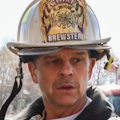
Robert Moran
Robert Moran served as fire chief of the Brewster, MA, Fire Rescue Department from 2010–2024. Prior to that, he served 26 years with the Englewood, NJ, Fire Department, retiring in 2010 after 12 years as chief of department. Moran holds a master’s degree from Fairleigh Dickinson University, is a certified public manager, and has a Chief Fire Officer (CFO) designation from the Center for Public Safety Excellence. He serves as an adjunct instructor for Kean University and the New Jersey Division of Fire Safety and lectures at numerous regional and national fire service conferences. Along with his training partner, John Lewis, Moran writes the back page of the New York State Association of Fire Chiefs' Size-Up magazine and operates Jersey Guys Fire Service Training.
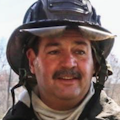
John J. Lewis
John J. Lewis is a retired lieutenant from the Passaic, NJ, Fire Department, formerly assigned as the training and safety officer. He remains active in fire service as a 20-plus-year instructor at the Bergen County, NJ, Fire Academy and as an adjunct instructor for Kean University/New Jersey Division of Fire Safety. Along with his partner, Robert Moran, Lewis has written and presented training programs throughout the country and co-authored many articles for fire service publications.
